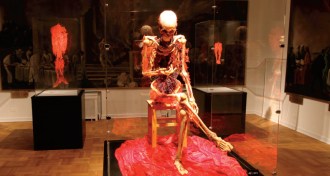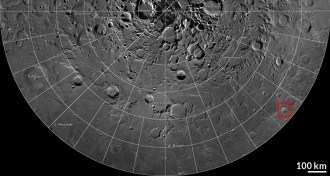Reviews
-
 Physics
PhysicsGravity’s Ghost and Big Dog
Sociologist Harry Collins chronicles the occasionally heated (and often arcane) debates among scientists studying gravitational waves.
-
 Astronomy
AstronomyIlluminating a dark universe
The film "Dark Universe" compresses a century of discovery into a crisp, comprehensible half hour.
-
 Ecosystems
EcosystemsWar’s ecological effects laid bare in ‘A Window on Eternity’
In "A Window on Eternity," entomologist E.O. Wilson chronicles both the shifting ecology of Gorongosa National Park after the war and how researchers are trying to repair the damage.
-
 Tech
Tech‘You Are Here’ maps course for directionally challenged
A Boston Globe technology reporter chronicles the evolution of navigational and mapmaking tools in "You Are Here."
-
 Tech
TechTo do: Exhibits to explore this May in D.C. and New York
Events include a celebration of science and original watercolor paintings from John James Audubon.
-
 Life
LifeFind your inner fish with PBS series on human evolution
A new documentary explores how the human body came together over 3.5 billion years of animal evolution.
-
 Health & Medicine
Health & MedicineSurgery museum holds wonders for the brave
Anatomical displays sit alongside art depicting medical history at the International Museum of Surgical Science.
By Sid Perkins -
 Animals
AnimalsThe Thing With Feathers
In the new book, "The Thing With Feathers," Noah Strycker brings people nose to beak with the plumed creatures he knows so well.
-
 Tech
TechMindless: Why Smarter Machines are Making Dumber Humans
Simon Head argues that computer business systems leave middle managers and workers with little creative latitude. They acquire fewer skills and their wages stagnate, hurting their job quality and buying power.
By Nathan Seppa -
 Neuroscience
NeuroscienceHa! The Science of When We Laugh and Why
Scott Weems, a neuroscientist, takes readers on a wide-ranging tour that explains what humor is and why readers should care.
By Sid Perkins -
 Astronomy
AstronomyZoom in on amazing detail in NASA moon map
An interactive mosaic of images from the Lunar Reconnaissance Orbiter lets you fly over the Moon’s north pole with unprecedented detail.
-
 Life
LifeTo do: Exhibits to explore in the U.S. and London
Highlights include the impending arrival of a T. rex skeleton in Washington, D.C., a pterosaur exhibit coming to New York City, and the history of longevity at the Royal Society in London.